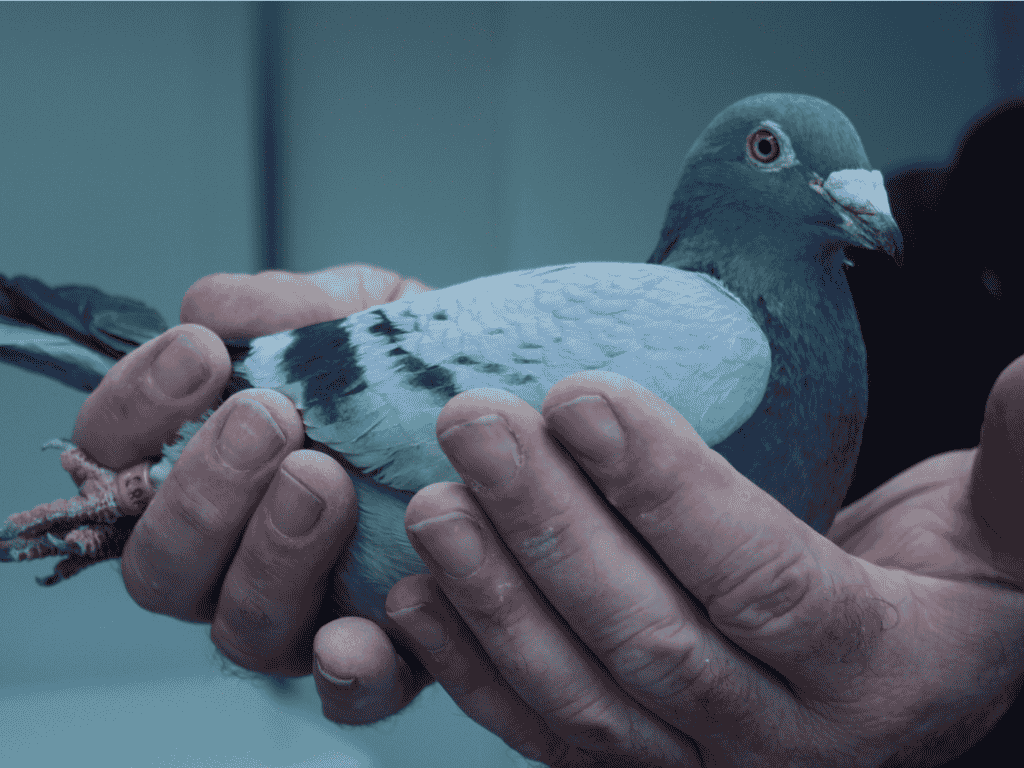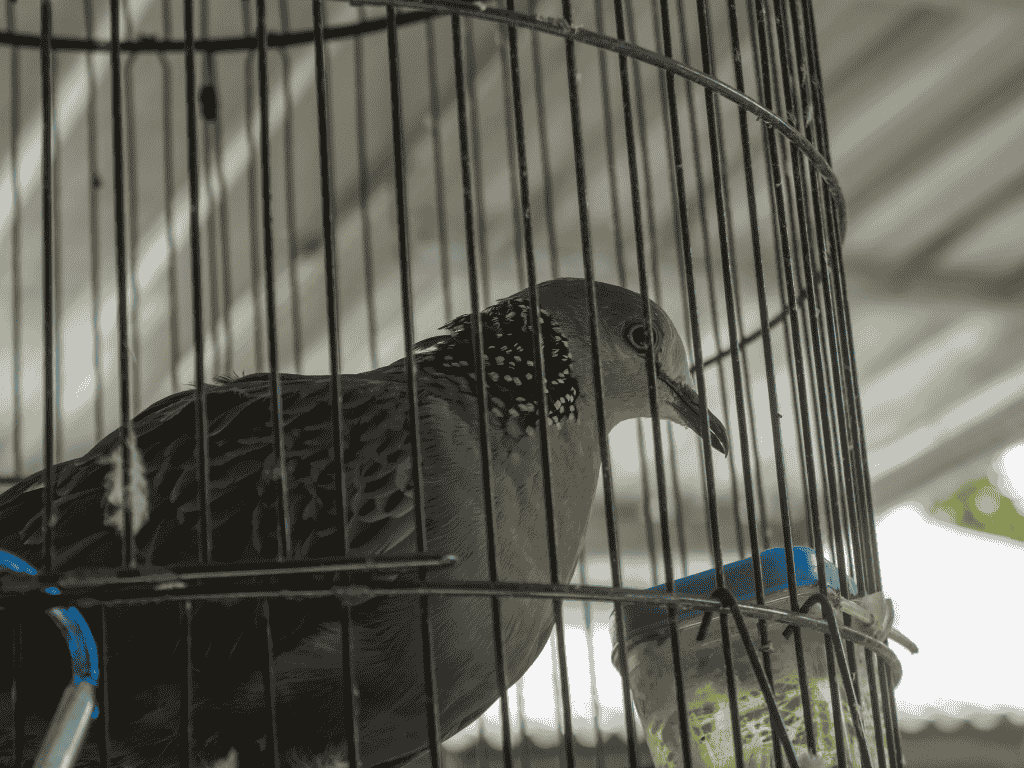“How to Trap a Pigeon” is not just our title—it’s the focus of this comprehensive guide that walks you through every step of humanely capturing pigeons, managing their populations, and mitigating the potential health risks associated with these urban birds.
Pigeons, while often considered a symbol of peace, can become a significant nuisance in urban areas. They often nest on rooftops, balconies, and other elevated places, leaving droppings that can damage buildings, vehicles, and other surfaces.
Additionally, pigeons can carry diseases and parasites, posing a health risk to humans. Trapping pigeons, when done humanely, can help manage their populations effectively. This detailed guide walks you through the process of trapping pigeons, from understanding their behavior to employing effective trapping techniques.

Understanding Pigeon Behavior
Pigeons are highly adaptable birds that thrive in urban environments. They tend to stay in areas where they have access to food, water, and safe roosting spots. Once pigeons settle in a location, they become familiar with the surroundings, often returning to the same places day after day. Understanding their habits and preferences is crucial when attempting to trap them.
- Feeding Habits: Pigeons are opportunistic feeders, meaning they will consume almost any type of food. They are especially attracted to grains like wheat, corn, and millet, but also readily consume scraps of bread, seeds, and fruit.
- Roosting and Nesting: Pigeons prefer to roost and nest in high places such as rooftops, ledges, and building cornices. They often build nests in secluded spots where they can remain undisturbed.
- Social Behavior: Pigeons are social animals, and a single pigeon is rarely seen alone. They often travel in flocks and may roost in groups. This trait is beneficial when setting traps, as trapping one pigeon can sometimes attract others.
Choosing the Right Type of Trap
There are several types of traps available for capturing pigeons, and choosing the right one depends on the circumstances and the number of pigeons you wish to trap. Here are some common types of traps:
a) Cage Traps (Live Traps)
Cage traps are the most popular and humane option for trapping pigeons. These traps are designed to catch the bird without harming it. When set up correctly, they are very effective at capturing pigeons.
- How It Works: The trap consists of a mesh cage with a door that can be triggered to close once the pigeon enters the trap to access the bait. The trap door may be triggered by a mechanism, such as a spring-loaded latch or a weighted door that falls once the bird enters.
- Advantages: Cage traps are reusable and can be used to capture multiple pigeons over time. They are relatively easy to set up and monitor.
- Disadvantages: Cage traps work best when the pigeons are already in the area, as they need time to adjust to the trap and its contents.

b) Baited Traps
Baited traps use food as the primary lure to draw pigeons into the trap. These can be cage traps or traps with a specially designed system where food is placed inside.
- How It Works: The trap may be a simple open cage with food inside or a more complex setup where the pigeon enters the trap to reach the food. Once the pigeon steps onto a pressure plate or triggers a mechanism, the door shuts.
- Advantages: These traps are highly effective when pigeons are hungry and can be used with various types of bait.
- Disadvantages: The pigeons may become cautious over time if they are fed elsewhere or if the trap isn’t well-hidden, causing the trap to be less effective.
c) Decoy Traps
Decoy traps use a live pigeon or a realistic-looking decoy pigeon to attract other pigeons into the trap. This method is commonly used when trying to catch several pigeons in one go.
- How It Works: A decoy pigeon is placed inside the trap or near the entrance. The decoy acts as a “safe” pigeon that encourages other pigeons to follow its lead and enter the trap.
- Advantages: This method works well for attracting multiple pigeons at once, especially if you’re dealing with a pigeon colony or flock.
- Disadvantages: Finding a decoy pigeon that works can be challenging, and you need to ensure that the decoy is not stressed out or harmed in the process.
d) Net Traps
A net trap can be an effective way to trap multiple pigeons at once. These traps use a large net that is placed over an area where pigeons are known to gather, such as feeding zones.
- How It Works: The net is either set up manually or triggered remotely. When pigeons land on the area or approach the bait, the net falls over them, trapping them inside.
- Advantages: Net traps are ideal for catching multiple pigeons simultaneously and can be set in areas with large pigeon populations.
- Disadvantages: These traps are more complex to set up and require monitoring to ensure the net drops at the right moment.
If you continue to struggle with pigeons in specific areas, you might also find our article HOW TO GET RID OF DOVES ON THE ROOF TOP: EFFECTIVE METHODS useful since many techniques overlap with pigeon management.
Baiting the Trap
Effective baiting is critical to attracting pigeons into the trap. Pigeons are not particularly picky eaters, so a variety of food options can serve as bait. However, it’s essential to know which foods are most attractive to pigeons to ensure success.
- Best Bait for Pigeons:
- Corn kernels (whole or cracked): One of pigeons’ favorite foods. The small kernels make it easy for them to eat.
- Bird seed: A mix of seeds, particularly millet or sunflower seeds, works well.
- Bread crumbs or cooked pasta: Pigeons are often attracted to the scent of bread.
- Peas or lentils: These are also appealing to pigeons.
- Fruit (such as grapes or berries): Sweet fruits can also work as bait, especially if they are overripe or moist.
- Baiting Tips:
- Place the bait inside the trap and near the entrance to encourage the pigeons to enter.
- Make the food visible: Pigeons are more likely to approach the trap if they can see the food inside. Place some bait outside to guide them into the trap.
- Be consistent: Once the pigeons start feeding in a particular area, they may return regularly. This is an ideal time to set your trap.
Setting Up the Trap
When setting up your pigeon trap, follow these tips for the best results:
- Location: Position your trap in areas where pigeons are known to feed or roost, such as near food sources, perches, or on rooftops.
- Disguise the Trap: If possible, cover the trap with a cloth or camouflage it with nearby objects to make it less noticeable to the pigeons.
- Check the Trap Frequently: Pigeons should not be left in the trap for extended periods as they can become stressed, overheated, or injured. Check the trap regularly, especially if you are using live traps.
- Ensure Safety: Make sure the trap is secure and that the doors and latches are functioning correctly.
Handling the Trapped Pigeon
Once the pigeon is trapped, follow these steps:
- Check the trap regularly: Never leave the pigeon in the trap for more than a few hours. Check early in the morning and evening.
- Release or Relocate: Once trapped, you have two main options: release the pigeon in a remote area far from your home or relocate it to an appropriate habitat. Ideally, the release site should be at least 5–10 miles away to ensure the pigeon does not return to your property.
- Humane Considerations: Handle the pigeon gently and wear gloves to avoid direct contact. Pigeons can carry diseases such as avian flu, so handling them with care is important.
For additional bird control tips, consider reading our comprehensive guide on HOW TO KEEP BIRDS AWAY FROM YOUR HOUSE: TOP 13 EFFECTIVE TIPS.
Alternative Methods for Pigeon Control
While trapping is an effective method, there are alternative ways to manage pigeon populations:
- Bird Spikes: Install spikes on ledges, windowsills, and rooftops to prevent pigeons from landing and nesting.
- Bird Netting: Netting can be placed around areas where pigeons are known to roost, making it impossible for them to land or nest.
- Ultrasonic Repellents: Devices that emit high-pitched sounds can deter pigeons from staying in an area. Non-lethal Repellents: For those who prefer not to trap, consider our guide on HOW TO SCARE AWAY A BIRD: TECHNIQUES WITH A STEP-BY-STEP GUIDE.
- Visual Deterrents: Reflective objects, such as aluminum foil or plastic owl decoys, can scare pigeons away.
Legal and Ethical Considerations
Before trapping pigeons, it is important to check local laws and regulations. In many areas, pigeons are not protected under law, but there may still be restrictions on how they are captured, handled, or relocated. Additionally, some cities require permits for trapping or relocating wildlife.
Conclusion
Trapping pigeons effectively and humanely requires understanding their behavior, using the right traps, and ensuring proper baiting and handling. By following this detailed guide, you can manage pigeon populations in a way that minimizes harm to the birds while addressing the problems they cause. Always prioritize humane methods, and take legal and ethical considerations into account when trapping pigeons.
